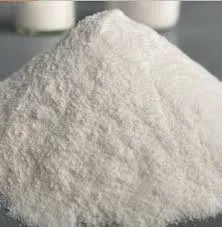
Dic . 26, 2024 06:00 Back to list
hec cellulose
The Versatility and Applications of HEC Cellulose
Hydroxyethyl cellulose (HEC) is a water-soluble polymer derived from cellulose, an abundant natural biopolymer. HEC is synthesized by the etherification of cellulose with ethylene oxide, resulting in a polymer that retains many of the desirable properties of cellulose while gaining improved solubility in water. HEC has gained significant attention and is widely used across various industries due to its versatile applications and unique properties.
Properties of HEC Cellulose
HEC possesses several intrinsic properties that make it an attractive choice for many applications. It is primarily known for its ability to form aqueous solutions, which can range from viscous gels to thin liquids depending on the concentration. This solubility is particularly advantageous in formulations where a stable viscosity is required. Moreover, HEC is non-toxic and biocompatible, making it suitable for use in food, pharmaceuticals, and personal care products.
Another crucial property of HEC is its rheological behavior. The viscosity of HEC solutions is shear-thinning, which means that the viscosity decreases with increasing shear rate. This characteristic allows for easy application in coatings, inks, and other formulations that require a smooth and controllable application process. Additionally, HEC is stable across a wide pH range, further enhancing its utility in various formulations.
Applications in Various Industries
1. Pharmaceuticals
HEC is extensively used in various pharmaceutical formulations. It acts as a thickening agent in suspensions and gels, enhancing the stability and viscosity of these products. HEC also serves as a controlled-release agent in tablets, allowing for a slow and steady release of active ingredients. Moreover, due to its biocompatibility, HEC is employed in drug delivery systems, particularly for topical applications, where it aids in the formulation of ointments and creams.
2. Cosmetics and Personal Care
hec cellulose

In the cosmetics industry, HEC is a popular ingredient in skin creams, lotions, shampoos, and conditioners. Its thickening and stabilizing properties help improve the texture and consistency of products, ensuring an appealing sensory experience. HEC provides excellent moisture retention, making it beneficial for hydrating formulations. Its ability to form gels and emulsions allows for enhanced product performance and sensory attributes.
3. Food Industry
HEC is also utilized in the food industry as a food additive. It functions as a thickener, stabilizer, and emulsifier, contributing to the texture and mouthfeel of various food products. For example, HEC is often used in sauces, dressings, and dairy products to achieve the desired viscosity and stability. Its use in food applications is supported by its approval for consumption and its non-toxic nature.
4. Construction Materials
In construction, HEC finds applications in cement, plaster, and mortar formulations. It acts as a water retention agent, ensuring that the materials do not dry out too quickly, which is crucial for achieving optimal strength and adhesion. HEC also enhances the workability of construction materials, making it easier to apply and manipulate them during the building process.
5. Oil and Gas Industry
The oil and gas industry utilizes HEC as a component of drilling fluids. Its thickening properties contribute to controlling the viscosity of the drilling mud, enabling better transport of cuttings and cooling of the drill bit. HEC helps maintain the stability of the drilling fluid, thus enhancing overall drilling efficiency.
Conclusion
Hydroxyethyl cellulose (HEC) is a remarkable derivative of natural cellulose with a plethora of applications across various sectors. Its unique properties, such as water solubility, viscosity control, and biocompatibility, make it an indispensable ingredient in pharmaceuticals, cosmetics, food products, construction materials, and the oil and gas industry. As research and development continue, HEC's potential applications may expand even further, paving the way for innovative solutions to meet the demands of diverse industries. As a biopolymer, HEC also exemplifies the shift towards more sustainable and environmentally friendly materials in modern manufacturing processes. Thus, HEC cellulose stands out as a versatile and valuable material in our rapidly evolving world.
-
Versatile Hpmc Uses in Different Industries
NewsJun.19,2025
-
Redispersible Powder's Role in Enhancing Durability of Construction Products
NewsJun.19,2025
-
Hydroxyethyl Cellulose Applications Driving Green Industrial Processes
NewsJun.19,2025
-
Exploring Different Redispersible Polymer Powder
NewsJun.19,2025
-
Choosing the Right Mortar Bonding Agent
NewsJun.19,2025
-
Applications and Significance of China Hpmc in Modern Industries
NewsJun.19,2025







